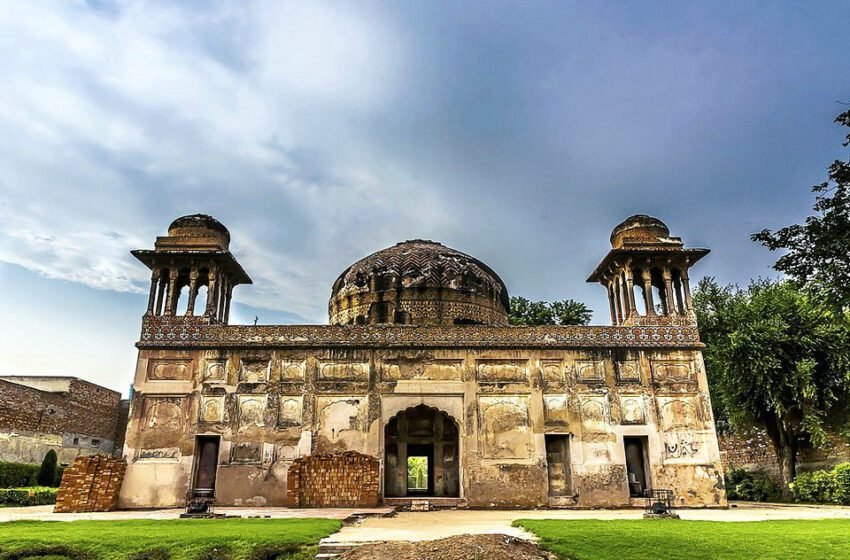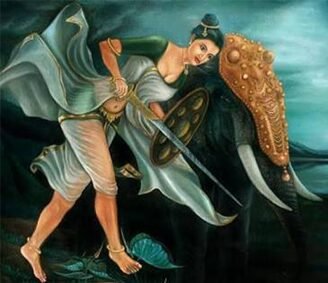MahaJanpada : Anga – The kingdom of Prince Anga

Anga was an ancient kingdom, one of the sixteen Janpadas and the Indian subcontinent. Its capital was Champa, which can also be known as Malini, it was considered one of the greatest cities of the 6th century. It was located in the east of Magadha, which was also considered its rival. It was famous for its wealth and commerce. According to mythology, this kingdom was named after its founder, Prince Anga. Bhaddiya and Assapura are regarded as the two most important cities of this Mahajanapada apart from Champa. The city, Bhaddiya is located 8 miles south of Bhagalpur and is identified as Bhadariya. Ancient Buddhist texts mention it as Anga to portray the meaning, the Mahajanapada of Anga people, however in other places it is referred to as the Rattha indicating it to the time of Buddha. During the tenure of Buddha, it was a proto-gemeinschaft type of state. Anga usually comprised of the districts of Begusarai, Saharsa, and Purnea of Bihar.

The kingdom had a very good trade system in ancient times. The capital of Anga, Champa, was also gifted to Karna by Jarasandha. Champa was known as Malinipuri before it was gifted to Karna, after Karna became the ruler of that district, he changed the name of the place to Champa. The significance of the Anga kingdom is huge in Mahabharata and Ramayana. In both Ramayana and Mahabharata, several incidents increased the popularity of the Anga Kingdom. According to Ramayana texts, the Anga kingdom was a place where Kamadeva was put to death by Lord Shiva. In the Anga kingdom, all Kamadeva’s body parts (Angas) were separated at that place. The Jain Prajnapana ranks Angas in the first group of Aryan people. It is also known as the Iron Age Era. The name Anga was given because this kingdom had a lot of mixed people thus the name Anga was given. Now, the Anga kingdom is situated in Bhagalpur, Bihar.
According to mythology, Duryodhana gifted this kingdom to Karna, which was completely barren and the demons used to live here. Which Bhanumati and Karna together destroyed and made this land suitable for cultivation. And soon Karna conquered the whole earth and Anga became ‘Mahajanapada’.

The Angas were the principal rulers of the empire, whose names are as follows: – Karna, Anga (founder of this kingdom, and son of Vali), Brihadratha, Vrishketu, Brahmadatta (the last king of Anga). Anga was ruled by rulers that belonged to non-Vedic houses. The descendants of king Vali ruled the Anga Kingdom. All the rulers of the Anga Mahajanapada were mostly wealthy noblemen who had the authority to grant pensions to the Brahmanas.
It has been mentioned in many stories that Magadha was occupied by Anga from the beginning, but in the middle of 6th century, King Bimbisara of Magadha killed King Brahmadatta of Anga and captured his capital, Champa. And making it his headquarters, he made his father Viceroy sit here to rule, and since then it was absorbed in the kingdom of Magadha.

Towards the end of the Vedic period, tribal allegiance had begun to make way for territorial allegiance and the loyalty of the people was getting transferred from tribal organisations to polito-geographical units. Such a development was also reflected in a relationship between the raja and others based on reciprocity rather than kinship, but it also indicated the emergence of a class of non-kinsmen who eventually became the cronies of the raja contributing towards the concentration of authority in the throne. By the middle of the sixth century BC, political Janapadas, some with fairly well-defined boundaries, came into existence and the headquarters of these Janapadas remained no longer rural.
Some of these Janapadas soon grew into mahajanapadas with more than one urban settlement. The legal and ideological outfit in these mahajanapadas was supported by a well-defined caste system under which the producers were saddled with economic obligations as well as social disabilities. Such a mechanism functioned through the establishment of a professional army and an administrative set-up that collected taxes and punished crimes against property, family, and social order. Starting with the middle Ganga zone and its periphery, this phenomenon became universal in the whole of India by the fourth century BC. The term janapada in the context of the mahajanapada period meant a land where people lived through many generations and were linked to each other not only through blood and geography but also through customs, religious rituals, and dialects, it was made up of a number of nagaras (cities) nigamas (trading centres), and gamas (villages) and was based on a gemeinschaft-type of society.

Formed naturally, it neither had any well-defined territorial bounds nor did it include uninhabited places, such as ghost towns and wasteland. In other words, the primary meaning of the term janapada in the context of the mahajanapada period may be taken as cleared land, with strong kin and geographical ties. The Pali texts mention the following sixteen Mahajanapadas (solasa mahajanapada) that existed at the time of the Buddha: Anga, Magadha, Kasi, Kosala, Vajji, Malla, Ceti, Vamsa, Kuru, Pancala, Maccha, Surasena, Assaka, Avanti, Gandhara, Kamboja.


